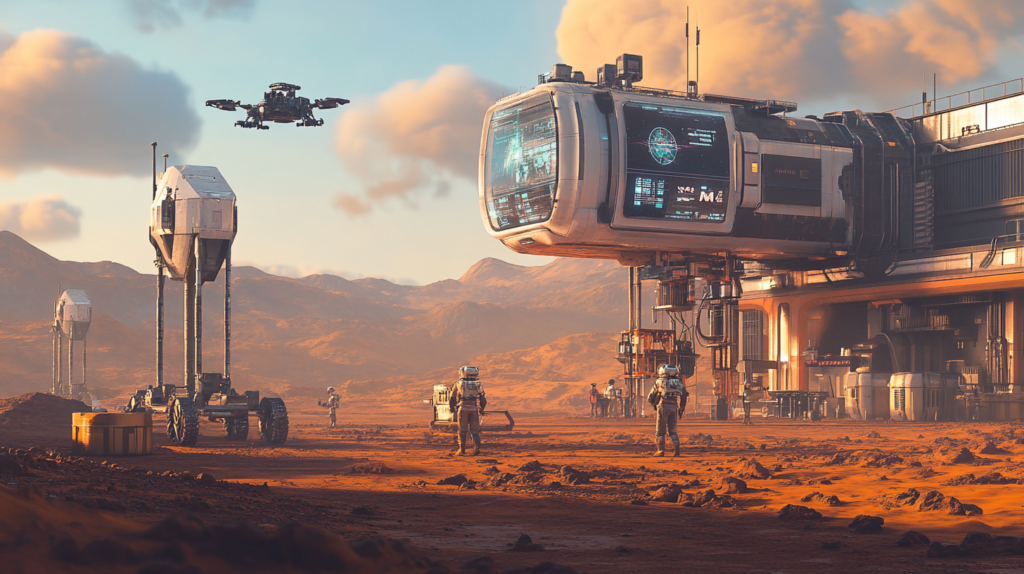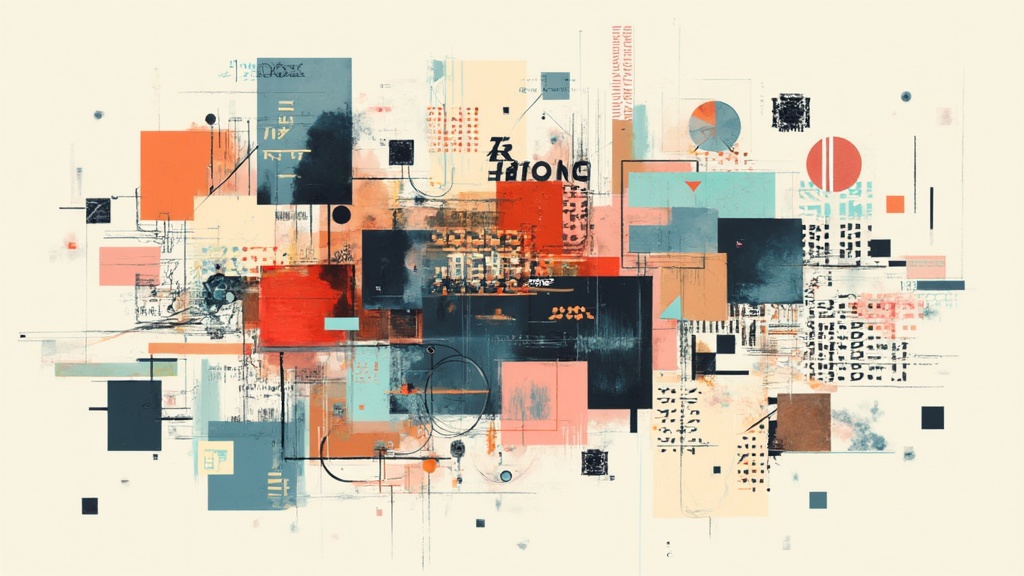
As humanity sets its eyes on the stars, the concept of terraforming—transforming inhospitable celestial bodies into habitable environments—captures the imagination of scientists, engineers, and dreamers alike. Artificial Intelligence (AI) stands poised to play a pivotal role, offering unprecedented capabilities in the design, execution, and management of large-scale planetary engineering projects. How can AI revolutionize terraforming efforts? How can advanced algorithms and autonomous systems be harnessed to make Mars or other celestial bodies suitable for human habitation?
Table of Contents
The Role of AI in Terraforming
AI-driven terraforming leverages machine learning, robotics, and predictive analytics to orchestrate the complex tasks required to alter planetary environments. From manipulating atmospheric conditions to engineering ecosystems, AI can process vast amounts of data, simulate multiple scenarios, and optimize solutions beyond human capabilities. This technological synergy promises not only to accelerate the pace of terraforming projects but also to enhance their feasibility and sustainability.
In the case of Mars, AI could be employed to deploy and manage fleets of autonomous rovers and drones, tasked with releasing greenhouse gases to thicken the atmosphere or deploying microbial life to initiate soil formation. Beyond our solar system, AI could assist in identifying exoplanets with terraforming potential, laying the groundwork for humanity’s interstellar colonization.
AI Systems for Deploying and Managing Fleets of Autonomous Rovers and Drones
An AI system designed to deploy and manage fleets of autonomous rovers and drones for large-scale planetary engineering projects would be a highly sophisticated and integrated solution. This system would combine various AI technologies, including machine learning, computer vision, robotic process automation, and real-time data analytics, to efficiently coordinate the activities of numerous autonomous units. Here’s a closer look at what this system might entail and the role no-code solutions could play in its creation, monitoring, maintenance, and modification.
Components of the AI System
1. Central Command and Control Unit (CCCU):
- Function: The brain of the operation, responsible for overarching strategy, decision-making, and coordination of all autonomous units.
- Capabilities: Real-time monitoring, data aggregation, analysis, predictive modeling, and adaptive learning to improve mission outcomes.
2. Autonomous Rovers and Drones:
- Function: Execute specific tasks such as soil analysis, atmosphere modification, construction, and maintenance.
- Capabilities: Equipped with sensors, cameras, and communication modules for real-time data sharing and decision-making.
3. Communication Network:
- Function: Ensures seamless data transmission between the CCCU and the autonomous units.
- Capabilities: High-bandwidth, low-latency communication protocols, possibly leveraging satellite and mesh networks.
4. Data Processing and Analytics Engine:
- Function: Processes the vast amounts of data collected by the rovers and drones.
- Capabilities: Advanced data analytics, pattern recognition, and anomaly detection to inform decision-making.
5. Energy Management System:
- Function: Manages the power supply and resource allocation for all autonomous units.
- Capabilities: Optimization algorithms to maximize efficiency and sustainability.
Role of No-Code Solutions
- Creation:
- Rapid Prototyping: No-code platforms like Make.com (formerly Integromat) can be used to quickly prototype various components of the AI system, enabling faster iteration and testing.
- Make.com Example: Using Make.com, engineers could visually map out workflows for rover deployment, specifying triggers, actions, and conditions without writing a single line of code. Imagine setting up a Mars mission like you’re arranging furniture in your new apartment—drag, drop, and done.
2. Monitoring:
- Dashboards and Visualization: No-code tools like Make.com could easily create intuitive dashboards and, using API connections, visualization capabilities, allowing for real-time monitoring of rover and drone activities, system health, and mission progress.
- Make.com Example: Create a real-time dashboard that aggregates data from multiple rovers, displaying metrics like energy levels, task completion status, and environmental conditions. Because who doesn’t want to keep tabs on their Martian rovers like a stock trader watching the market?
3. Maintenance:
- Automated Updates: No-code solutions like Make.com can simplify the deployment of software updates and patches across the entire system, ensuring that all units are running the latest versions of their respective programs.
- Make.com Example: Schedule and automate software updates for all rovers and drones, ensuring they are uniformly applied without manual intervention. It’s like setting your phone to auto-update, but for an entire fleet of Martian explorers.
4. Modification:
- Scalability: No-code platforms often offer scalable solutions, making it easier to add new features or expand the system as the mission evolves.
- Make.com Example: Easily integrate new sensors or modules into the existing workflows without overhauling the entire system. You know, just in case you decide halfway through that you need to add a “Martian soil moisture sensor” to your toolkit.
- Customization: Users can easily customize various aspects of the system to adapt to changing conditions or new mission requirements, without needing extensive programming knowledge. Because, let’s be honest, who has the time to learn Python when you’re busy terraforming a planet?
Example Scenarios
- Atmosphere Modification: Autonomous drones could be deployed to release specific gases into Mars’ atmosphere. The CCCU would monitor atmospheric conditions in real-time, using data analytics to adjust the deployment strategy as needed.
- Make.com Example: Automate the deployment schedule and adjust it based on real-time atmospheric data. If the atmosphere starts getting a little too thin, Make.com can trigger an alert faster than you can say “Houston, we’ve got a problem.”
- Soil Analysis and Preparation: Rovers equipped with sensors could collect soil samples and analyze them on-site. Data would be transmitted back to the CCCU, where specific AI modules would determine the best locations for microbial life introduction.
- Make.com Example: Create a workflow that automatically collects, processes, and visualizes soil data, providing immediate insights. Think of it as a soil scientist in your pocket, without the PhD.
- Construction Projects: Drones and rovers could work in tandem to build infrastructure, such as habitats or research stations. The CCCU would coordinate their activities, ensuring efficient use of resources and adherence to project timelines.
- Make.com Example: Manage the project timeline, synchronizing tasks between autonomous units. Make.com might just become the project manager you wish you had on Earth.
As we venture deeper into the cosmos, the integration of AI in terraforming endeavors holds the promise of transforming science fiction into reality, paving the way for a multi-planetary civilization. Integrating no-code solutions like Make.com (formerly Integromat) into an AI system for deploying and managing fleets of autonomous rovers and drones offers significant advantages in terms of speed, flexibility, and user-friendliness. By leveraging these no-code platforms, mission planners and engineers can rapidly prototype, monitor, maintain, and modify complex AI-driven systems, accelerating the pace of innovation and enhancing the feasibility of large-scale planetary engineering projects.


